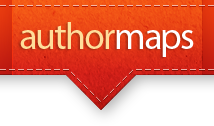Don’t Lie to Your Readers
One of the most egregious errors authors can make is creating a title that doesn’t deliver on what it promises. This can kill sales and/or leave the purchaser quite disappointed.
In regard to the latter reaction, even if you don’t intend to write another book, keep in mind that the very best way to sell any book is by word-of-mouth endorsements of it. A vague or a misleading title won’t get talked about in the way you want!
Let’s look at one example of this sin.
The Joy of Signing: A Dictionary of American Signing (third edition) by Lottie L. Riekehof, PhD (Springfield, MO: Gospel Publishing House, 2014, 3rd ed.)
The navy-blue cover of the 3rd edition of this bound book announces “Over 1 Million Copies Sold”.
The book has several useful appendices and an informative preface. It’s a great textbook for both Signed English (used by hearing people) and American Sign Language (used by deaf people).
But…
There’s no joy in signing in The Joy of Signing. Certainly not like there is in paperbacks like Learn to Sign the Fun Way: Let Your Fingers Do the Talking with Games, Puzzles, and Activities in American Sign Language by Penny Warner (NY: Three Rivers Press, 2001)
Worse, The Joy of Signing: A Dictionary of American Signing isn’t even a dictionary!
What is a language dictionary?
First of all, you may wonder if American Sign Language (ASL for short) is a language. Yes, it is. Linguists have officially classified ASL as a language. ASL uses a different word order than spoken English, and it has its own grammar. Even its way of communicating the plural forms of nouns is different.
But, when we pick up almost any other language dictionary we expect to find two parts: an alphabetical list of foreign words with English equivalents and an alphabetical list of English words with foreign equivalents.
However, American Sign Language, like Chinese, is not based on letters of an alphabet. Chinese people use symbolic characters to indicate words; deaf people use symbolic hand shapes, some of which involve movement, along with facial expressions.
Still, one half of this book could be in alphabetical order. That half would be an alphabetical list of English-speaking people’s words followed by the equivalent ASL hand signs. Is that what The Joy of Signing includes? No!
Instead, this book uses broad categories, such as family relationships, time, emotion and feeling, etc. followed by diagrams of each hand sign included within that category.
Unlike alphabetical arrangements of spoken-English words, there’s no commonly-agreed-upon list of categories for teaching ASL. Every ASL textbook uses its own categories, and these categories are not in alphabetical order.
Furthermore, the individual hand signs within each categorical section of The Joy of Signing, aren’t arranged in alphabetical order either.
So, what IS in alphabetical order in The Joy of Signing? Its index!
But is an alphabetical list of spoken-English words followed by a single page number really an index? Absolutely not!
What’s wrong with a list of words?
Having to go to the back of a 348-page bound book each time you want to look up a word and then flip back to the page where the equivalent hand sign will be found is time-consuming and tedious.
This is the whole reason why the main text of language dictionaries is in alphabetical order!
Readers who judge this book by its cover and buy it will be sorely disappointed by its lack of authenticity. The book is truly a great textbook. It’s comprehensive and includes essays about a variety of things about sign language and deaf culture that hearing people will find useful.
It’s a fine book for young adults and older adults of any age. But it is not very easy to use this book as a dictionary. And because it is in print form, many students of ASL will prefer free Internet sites for looking up words
It’s far easier to see on video the motion of ASL hand signs but much harder to find the valuable information about ASL and each hand sign in The Joy of Signing.
Competition from the Internet?
Yes, maybe you’ve done your ‘due diligence’ and looked for paperback or ebooks similar to your own book. But you must also consider your competition on the Internet.
Books are often about finding information as well as entertainment. For many readers You Tube will satisfy both needs.
Nevertheless, non-fiction books have indexes, and indexes are what enable readers to find specific bits of information quickly and find out about different aspects of a topic or person of interest.
For a step-by-step look at how the author of The Joy of Signing could have made her book, (as she clearly hoped to do) usable as both a dictionary and a textbook for learning American Sign Language, please see my post, “Table of Contents and Index Synergy” at my WordmapsIndexing site.







